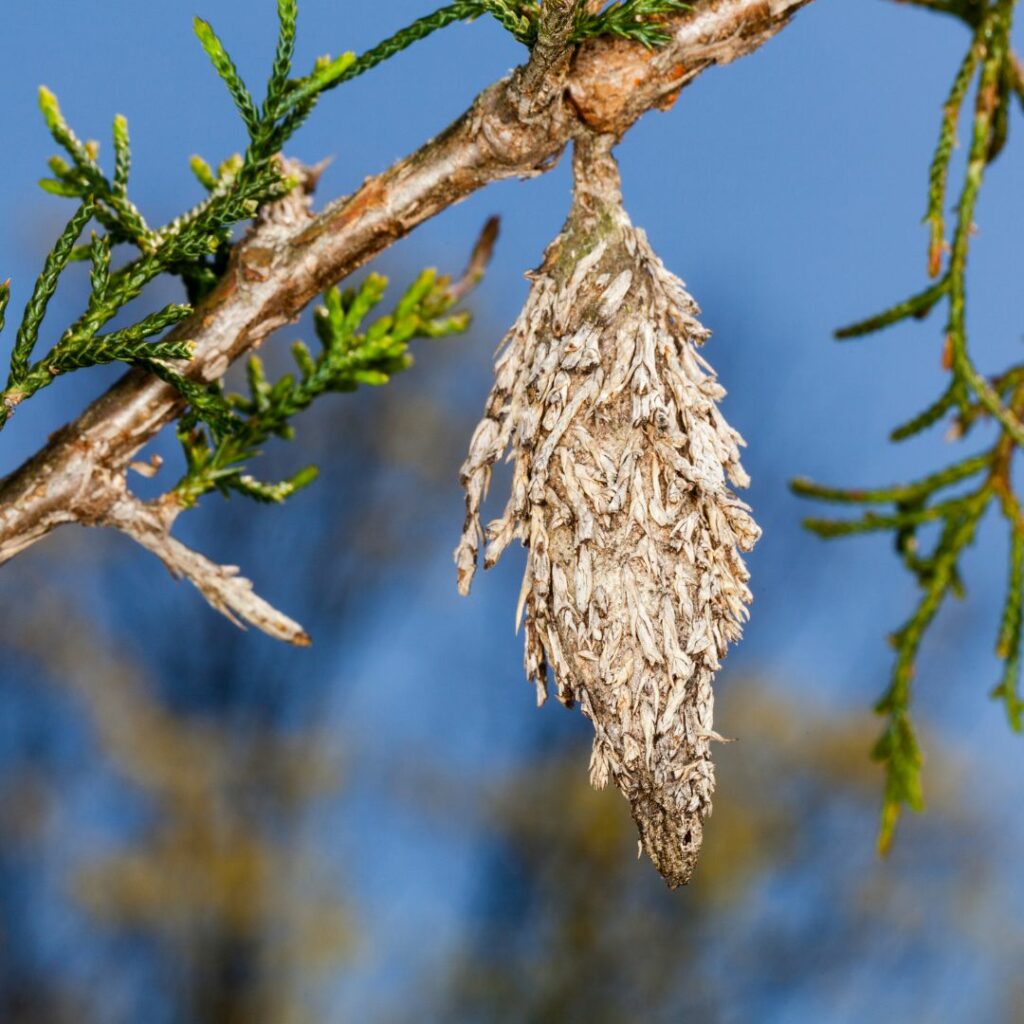
June is the start of bagworm season. These pests are notorious for their camouflage and the damage they can inflict on over 100 plant species. See how to spot bagworms early on and four strategies for managing your bagworm infestation.
Tree Symptoms: The Dangers of Bagworms
There are a few tell-tale signs that bagworms are beginning to wreak havoc on your trees and shrubs. Here are a few ways you can tell you may have a bagworm problem before seeing a cocoon:
- Sudden, dramatic changes in the plant’s health
- Small holes in the foliage
- Trees and shrubs turning brown
- Evergreen needles dropping excessively
- Irrigation and fertilization does not help
How to Spot Bagworms
Bagworms emerge from their cocoons during late spring and early summer. These caterpillars are most easily identified by their unique cocoons, which resemble small bags hanging from branches. The cocoons are composed of materials from the host tree, providing excellent camouflage and making them difficult to spot. If you’ve noticed dry, bag-like structures hanging from the branches of your trees and shrubs, you might be dealing with bagworms.
Bagworms are most commonly found on the following plants:
- Evergreens: This is by far the most common host plant for bagworms.
- Deciduous Trees: Also known as shade trees, these trees lose their leaves for a portion of the year.
- Ornamental Shrubs: Common for adding beauty to landscaping, these shrubs tend to serve no other purpose than to add color, form, or foliage.

TREATMENT AND MANAGEMENT
Managing bagworm infestations involves both prevention and treatment. Here are some effective strategies:
Regular Inspections
Regularly inspect your trees and shrubs, especially when bagworms are most active in late spring and early summer. If you outsource an inspection, look for ISA Certified Arborists near you. Early detection is key to preventing extensive damage.
Manual Removal
Removing the cocoons from branches is easier when there is a smaller quantity. Purdue experts recommend submerging the removed cocoons in a bucket of soapy water to prevent re-infestation. This is most effective before the bagworms hatch out of their cocoons in June, so schedule an annual inspection to catch them early.
Chemical Treatments
For larger infestations, chemical treatments may be necessary. Typically, the best time to treat a bagworm infestation is from mid to late July through early August. During this period, the larvae are most vulnerable to insecticides. Chemical insecticides should be applied to the foliage so the bagworms can ingest it.
When considering chemical treatments, consider reaching out to a certified arborist. Not only will they know what chemicals are safe and necessary for your unique situation, but they will also only need to treat infected trees and shrubs. This helps save you money and mitigates the amount of unnecessary chemicals added to the environment.
Professional Help
If you’re unsure about handling a bagworm infestation or if the problem persists, professional help is available. Our team can inspect your trees and shrubs, recommend the best treatment options, and apply necessary treatments to ensure your landscape remains healthy and beautiful. Contact us today!






